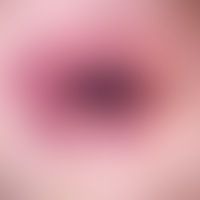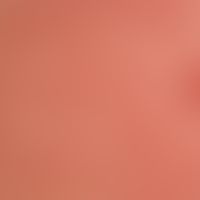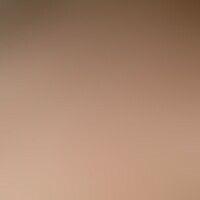Image diagnoses for "Nodules (<1cm)"
408 results with 1395 images
Results forNodules (<1cm)

Verruca plantaris B07
Verrucae plantares: papules and plaques on the sole of the foot of a 52-year-old man, which have been present for several years, and which cause considerable pain when walking.

Targetoid hemosiderotic hemangioma D18.01
Haemangioma targetoides haemosiderotic: dermatoscopic image with sinosidal vascular dilatations. black spots correspond to thrombosed vascular convolutes. image from the collection of Dr. med. Michael Hambardzumyan.

Mycosis fungoides C84.0
Special form: Mycosis fungoides, folliculotropic. 3-year-old clinical picture with strongly itchy, moderately sharply defined, follicular red plaques. detailed picture.

Lichen planus follicularis capillitii L66.1
Lichen planus follicularis capillitii. increasing spot-shaped hair loss with known Lichen planus. extensive redness with irregular, scarring alopecia (follicle structure is missing). itching.

Sweet syndrome L98.2

Steatocystoma multiplex L72.20
Steatocystoma multiplex. detail enlargement: multiple, whitish, symptomless papules up to 6 mm in diameter.

Acne keloidalis nuchae L73.0
Acne keloidalis nuchae, detail magnification: In the center a wide scar plate with a linear course to the left and right side (condition after several excisions) with papules and nodules localized at the margins.

Cheilitis actinica (overview) L57.8
Cheilitis actinica. crusty, partly erosive, inflammatory reaction of the lower lip in a 67-year-old man. condition after blistering due to intensive sun exposure. Dg.: condition after acute cheilitis actinica.

Early syphilis A51.-
Syphilis acquisita. maculo-papular exanthema with involvement of the mucous membranes of the penis.















